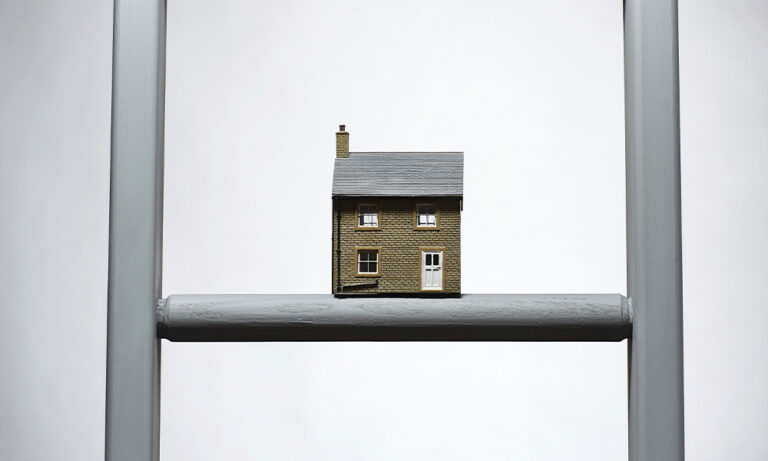When it comes to letting out a property, it pays to be on top of things from day one – particularly your tax affairs, which can be complicated and time consuming. Even the most experienced landlords can fall foul of taxation, so those with less experience really need to ensure they’re on top of things. This guide explains everything you need to know about landlord taxes.
Paying tax on rental income
If you earn money from renting out a property, or properties, you’ll need to pay income tax on the profits.
As soon as you start letting a property, you must tell Her Majesty’s Revenue and Customs (HMRC) to establish if you are liable for income tax.
Exactly how much tax you’ll need to pay will depend on your other sources of income.
Your rental profits are added to any other income to determine which tax band you fall into:
• Basic Rate – 20% income tax
• Higher Rate – 40% income tax
• Additional Rate – 45% income tax
Landlord tax and deductible expenses
When calculating the profit from your rental property, or properties, to determine how much tax you owe, you can make certain deductions which will help lower your bill.
Many of the costs associated with running your properties can be offset against your overall profit, including:
• Water rates, council tax, gas and electricity (if you pay them rather than the tenant)
• Buildings and contents insurance
• Costs of services, including the wages of gardeners and cleaners (as part of the rental agreement)
• Letting agents’ fees
• Legal fees for lets of a year or less, or for renewing a lease of less than 50 years
• Accountant’s fees
• Ground rents and service charges
• Direct costs such as phone calls, stationery and advertising for new tenants
• Maintenance and repairs, but not improvements
• Costs associated with regulations, such as Energy Performance Certificates (EPCs), gas safety certificates, Electrical Installation Condition Reports (EICRs)
Wear and tear allowances
Prior to 2016, landlords were able to claim 10% of their net rental profit to cover any wear and tear on their rental properties.
Under the current rules of Replacement Relief, however, you can claim tax relief on replacement items – capped at the cost of a ‘modern equivalent’. This means, for instance, if you replace a sofa that cost £1,000 with one that costs £800, you can only claim relief on £800. Replacement Relief is available on:
• Moveable furniture supplied for a tenancy
• Carpets, curtains and linen
• Appliances like fridges, freezers and ovens
• Kitchen items like crockery and cutlery
• Televisions and other technology
You can also deduct the cost of disposing of an old item, but you must deduct any proceeds if you decide to sell anything you’re replacing.
How is landlord tax calculated?
Income tax from your rental profit will usually be paid through self-assessment.
To work out your tax bill, you need to:
• Work out your rental profit (total rental income – allowable expenses = rental profit)
• Deduct your personal tax allowance (rental profit – personal allowance = total taxable rental profit)
• Calculate your total tax due (total taxable rental profit x income tax rate % = tax owed)
Do landlords pay National Insurance
As a landlord, you may have to pay National Insurance.
Class 2 National Insurance will be due if:
• Your rental profits are more than £6,475 per year
• Being a landlord is your main source of income
• You rent out more than one property
You can also opt to pay National Insurance even if your profit is below £6,475 so there is no gap in your payment record, which could affect your state pension entitlement.
How much tax do you pay on rental income?
Your tax bill from your rental profits will depend on which income tax band you fall into – taking into account all your income from property and any other income streams (for instance, if you also have a job). The tax bands for UK income tax (April 2020-April 2021) are:
| Band | Taxable income | Tax rate |
| Personal allowance | £12,500 | 0% |
| Basic rate | £12,501 – £50,000 | 20% |
| Higher rate | £50,001 – £150,000 | 40% |
| Additional rate | £150,000 + | 45% |
When did landlord tax change?
Since April 2020, landlords have no longer been able to deduct mortgage interest from their rental profits as an allowable expense.
Instead, you must claim a 20% tax credit against the cost of your mortgage interest.
The rules changed in 2017 and were phased in over the next three years:
• 2017-18: Deductions from property income were restricted to 75% of finance costs. The remaining 25% is subject to basic rate tax
• 2018-19: Deductions from property income were restricted to 50% of finance costs. The remaining 50% is subject to basic rate tax
• 2019-20: Deductions from property income were restricted to 25% of finance costs. The remaining 75% is subject to basic rate tax
• 2020-21: 100% of finance costs are now covered by a 20% tax credit
Here’s an example of how the current 20% tax credit rules could affect you:
You have an outstanding buy-to-let mortgage of £150,000 on a rate of 4%. That means your annual interest repayment would be £6,000, while your rental income from the property is £15,000 per annum. Under the old rules, you would have been able to claim tax relief on the £6,000 in mortgage interest, meaning your taxable profit was £9,000.
Now, though, your whole £15,000 rental income would be subject to tax, less other allowable expenses.
This means landlords paying the higher or additional rates of income tax are worse off, while those paying the basic rate may have moved into those higher rate bands.
Landlord stamp duty
Landlords and buyers of second homes must pay a stamp duty surcharge of 3% on top of normal rates.
Stamp duty, though, has been the subject of much change during the Covid-19 pandemic – and landlords have been able to save large amounts on new rental properties.
Currently, landlords in England and Northern Ireland pay only the 3% surcharge on the first £500,000 of a property’s purchase price – meaning they could save up to £15,000 compared with the previous rates of stamp duty.
The current rates of stamp duty for landlords in England and Northern Ireland are:
| Purchase price amount | Stamp duty rate for landlords |
| Up to £500,000 | 3% |
| £500,001 – £925,000 | 8% |
| £925,001 – £1.5m | 13% |
| £1.5m + | 15% |
Landlords in Scotland, meanwhile, must pay an additional 4% Land and Buildings Transaction Tax (LBTT) surcharge on their properties.
The current rates of LBTT for landlords in Scotland are:
| Purchase price amount | Stamp duty rate for landlords |
| Up to £250,000 | 4% |
| £250,001 – £325,000 | 9% |
| £325,001 – £750,000 | 14% |
| £750,000 + | 16% |
In Wales, buyers pay Land Transaction Tax (LTT) and landlords must pay the higher rate, which is a 4% surcharge.
The current rates of LTT for landlords in Wales are:
| Purchase price amount | Stamp duty rate for landlords |
| Up to £180,000 | 4% |
| £180,001 – £250,000 | 7.5% |
| £250,001 – £450,000 | 9% |
| £450,001 – £750,000 | 11.5% |
| £750,001 – £1.5m | 14% |
| £1.5m + | 16% |
Stamp duty rates in England, Scotland, Wales and Northern Ireland are set to revert back to previous rules on April 1, 2021, although a possible extension to the ‘holiday’ in England and Northern Ireland was being debated at the time of writing, with more news expected during the spring Budget on March 3.
Landlord capital gains tax
If you sell a rental property, you could be liable for capital gains tax (CGT).
You’ll pay CGT on the ‘gain’ you’ve made, which is the difference between the price you paid for your rental property and the price you sell it for.
CGT is paid through self-assessment, much like income tax on rental profits.
The CGT allowance
The CGT-free allowance for the 2020-21 is £12,300, meaning you’ll pay no CGT on the first £12,300 gain from selling your rental property.
CGT rates for landlords
The rate of CGT you pay depends on your total taxable income and which income tax band you fall into:
• Landlords paying the basic 20% rate of income tax will pay 18% CGT on rental property sales
• Landlords paying the higher (40%) or additional (45%) rate of income tax will pay 28% CGT on rental property sales
CGT deductions for landlords
There are certain capital expenses you can deduct from your ‘gain’ to bring down your CGT bill. They include:
• Stamp duty fees from the original purchase
• Renovation work to improve the property
• Estate agent fees from the sale
• Solicitor fees from the sale
Working out your CGT bill
To work out how much CGT you owe following the sale of a property:
• Deduct the price you sold the property for from the price you paid for it to work out your ‘gain’
• Deduct the CGT allowance
• Deduct any allowable expenses
Further reading…
Retaining good tenants is key to keeping re-letting costs down when you’re a landlord – take a look at our guide on how to be a good landlord.
If you’re a landlord or thinking of investing in buy-to-let property this year, you need to know about your obligations.
Our piece covers every piece of landlord legislation you can expect to see in 2021.




